Legends are told to capture the imagination. Tim Birkin’s heroics at the 1930 Le Mans have attained that exalted status, become the stuff of legend. In 1930, Motor Sport magazine described the race as an “epic duel” between the Bentley cars and the white Mercedes of Caracciola. It was expected that the large German car would easily outrun the British. The “Blower” Bentleys were sent out to act like the hare and have the Mercedes chase or be chased. MotorSport was effusive in describing the duel: “One hears a murmur which grows and grows until it becomes a shrill roar and the Mercedes sweeps round the bend and tears past the grandstands, in the lead. Eighteen seconds later Birkin on No. 9 supercharged 4½-litre Bentley flashed by with his teammates and the field behind him.” Birkin’s sacrifice was the marque’s victory.
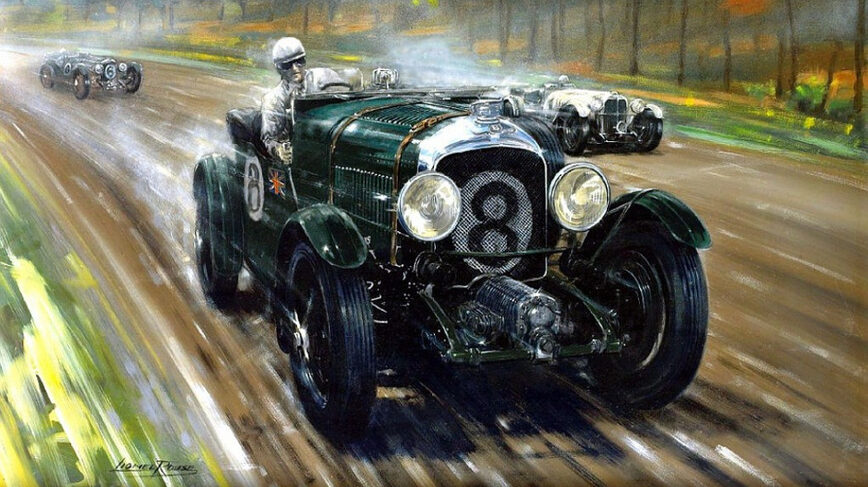
The immortalisation of the Blower Bentley racing at Le Mans 1930 by Rouse H. Lionel.
The Birkin “Blower” Bentley, charging around the Circuit du Sarthe in pursuit of a superior opponent was courageous and cavalier, the stuff legends are made of and, who wouldn’t want to be part of one? The problem is that in total, there were only 55 supercharged Bentleys ever made; and only one that Birkin himself raced at Le Mans. That car is now owned by Bentley Motors. To quote Adrian Hallmark (CEO and Chairman), it is “our prize jewel.” However, the uniqueness of it did not stop Mr Hallmark from instigating and authorising the project to create a dozen exact copies as a continuation series, raising the question of what constitutes original and whether driving a modern manufactured car is the same as driving the original vintage form.
For Ralph Lauren and other owners of the Dorothy Paget/Bentley Motors supercharged 4.5 litre Bentleys from 1930, the answer is a resounding “no”. In a letter to Mr Hallmark, they outlined, “We urge you to please not squander time, funding, energy and the Bentley brand’s reputation upon the recently-announced batch of 12 facsimile cars, that would serve only to dilute that special admiration and awe that can only come from viewing and embracing the genuine article. To do otherwise would be to pervert a glorious history.”
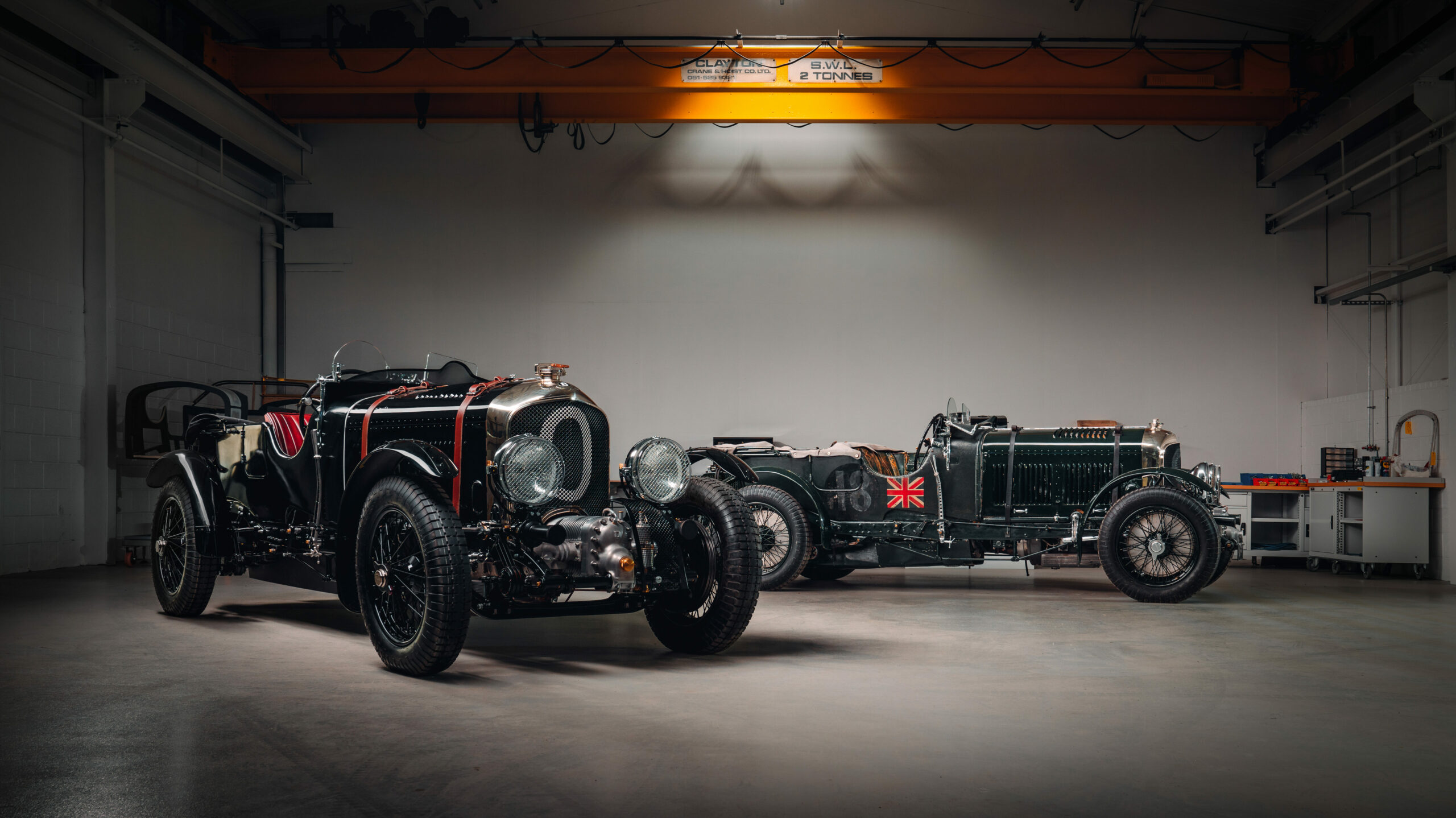
Bentley Blower Continuation car and the original.
But, would it? Argued more pertinently, where does originality start and end? Does driving the continuation car to provide the same experience as the original and how might the two compare in the future?
Bentley is not alone in producing cars from yesteryear in a modern form. Just in the last few years, there has been a trend for manufacturers to reproduce successful past models in every detail by stripping down the original, digitally imaging everything, and then building exact replicas. That precise word is seldomly found in the press release, instead, the preferred term is “continuation” series. So far, we have seen such series for the “Blower” Bentley, the Aston Martin DB5 (James Bond) and DB4Z, Jaguar XKSS and just released this year, the Jaguar C-Type. Always a limited edition with a six or seven-figure price tag attached to them and always “sold out”.
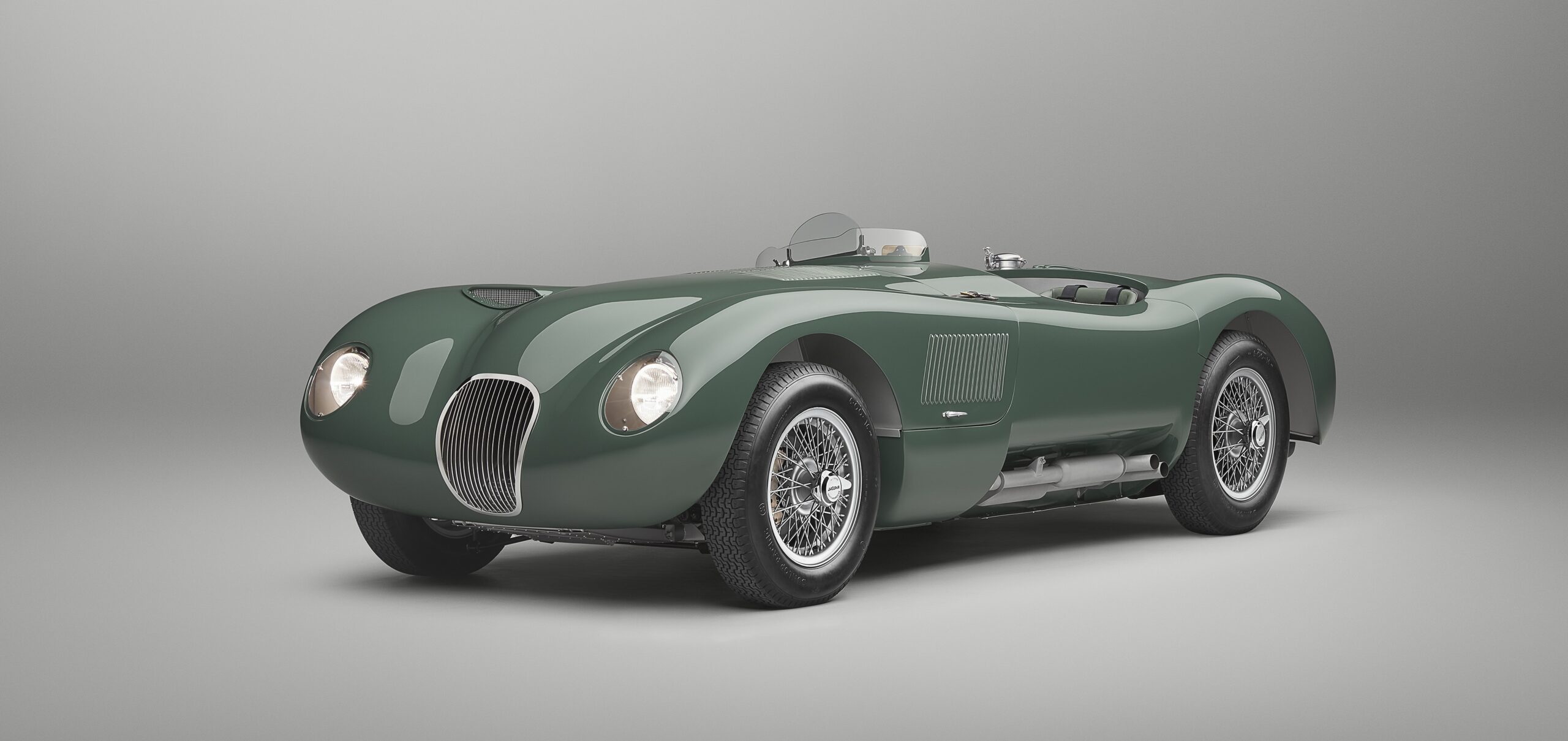
In 1951, Jaguar C-type became the first Jag to win the hallowed 24 Hours of Le Mans. Exactly 70 years later, the British marque hand-built the C-Type Continuation series.
For example, Jaguar claimed the XKSS was a continuation because it recovered the nine missing chassis numbers for the famous originals and recreated them using the same process as Bentley did with the Blowers. Their argument was that they would have built them had it not been for the Brown Lane factory fire in 1957, hence completing the series that was basically a race D-Type for the road.
Part of the problem in the existence of such vehicles must be levelled at the FIA (Fédération Internationale de l’Automobile) rules concerning a classic car for racing. Otherwise known as “Appendix K”, it was created so that “Historic Cars may be used for Competitions under a set of rules that preserve the specifications of their period and prevent the modifications of performance and behaviour which could arise through the application of modern technology. Appendix K applies to cars which are either original competition cars, or cars built to exactly the same specification.” To cut to the chase (no pun intended), this means that the Bentley Blower continuation series is eligible to race in classic car races along with the original.
Birkin’s own Blower Bentley was a “barn find” in the early 1950s, basically a rusting heap of parts on a chassis. The car had been stored in an open-fronted shed and had been badly affected by the elements. The restoration was carried out by Tony Townsend’s Elmsdown Engineering company who is well known for its work in returning Bentleys to their former glory. Elmsdown reportedly spent over 3,000 hours returning it to its “original” condition. At Herrentals in 1959, it demonstrated its restoration by covering the flying mile in both directions recording an average speed of 125.68 mph. This is essentially the car that Bentley owns today and on which they based the 12 new replicas, but it is not the 1930s that Birkin drove at Le Mans.
[1] What is termed “Historic Technical Passport Guidelines”: https://www.fia.com/sites/default/files/2020_gbr_htp_detailed_guidelines.pdf
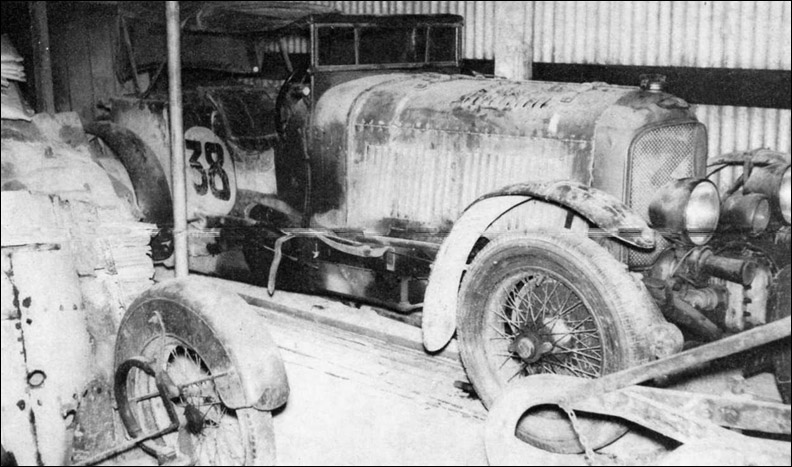
Birkin’s original Bentley Blower when it was found in a barn in 1955.
There are concerns over what constitutes originality, what is generally referred to in the motor trade these days as “Trigger’s broom”: A car that does not reach the grand old age of 90 without having a few tweaks here and there, since in any mechanical machine, eventually a part will wear out and need to be replaced. Thanks to a few court cases on the question, there is a legal definition but court judgements aside, the definition of a legal vintage car lies with the chassis number. You can have a whole “original” vintage car built from just the plate and the chassis number, providing you adhere to the FIA rule: a racing car is classified as original if 85 per cent of its components are made in the same form and with the same materials than the original, or comprised of “new-old” parts. While this might, at surface value, seem like a fair definition, it allows a great deal of latitude on what might be considered “new-old” parts, the same form and original fit depending on the class and vintage of the car.
If you have the cash and the desire, then the experience can be yours. But outside of the physical acquisition of the car and entering a race, there is an epistemological element to this. Is the experience of driving a continuation series car an original one? Probably it is. Continuation series cars are legally permitted to race in “classic” events, they will not win Concours, but they can race against original vintage models.
[2] “Trigger’s broom” refers to a popular UK sitcom scene from “Only Fools and Horses”. Trigger, a road sweeper, reveals that he has used the same road sweeping brush for his entire career. “This old broom”, he says “has had 17 new heads and 14 new handles”. Sid points out “how the hell is it the same bloody broom then?”
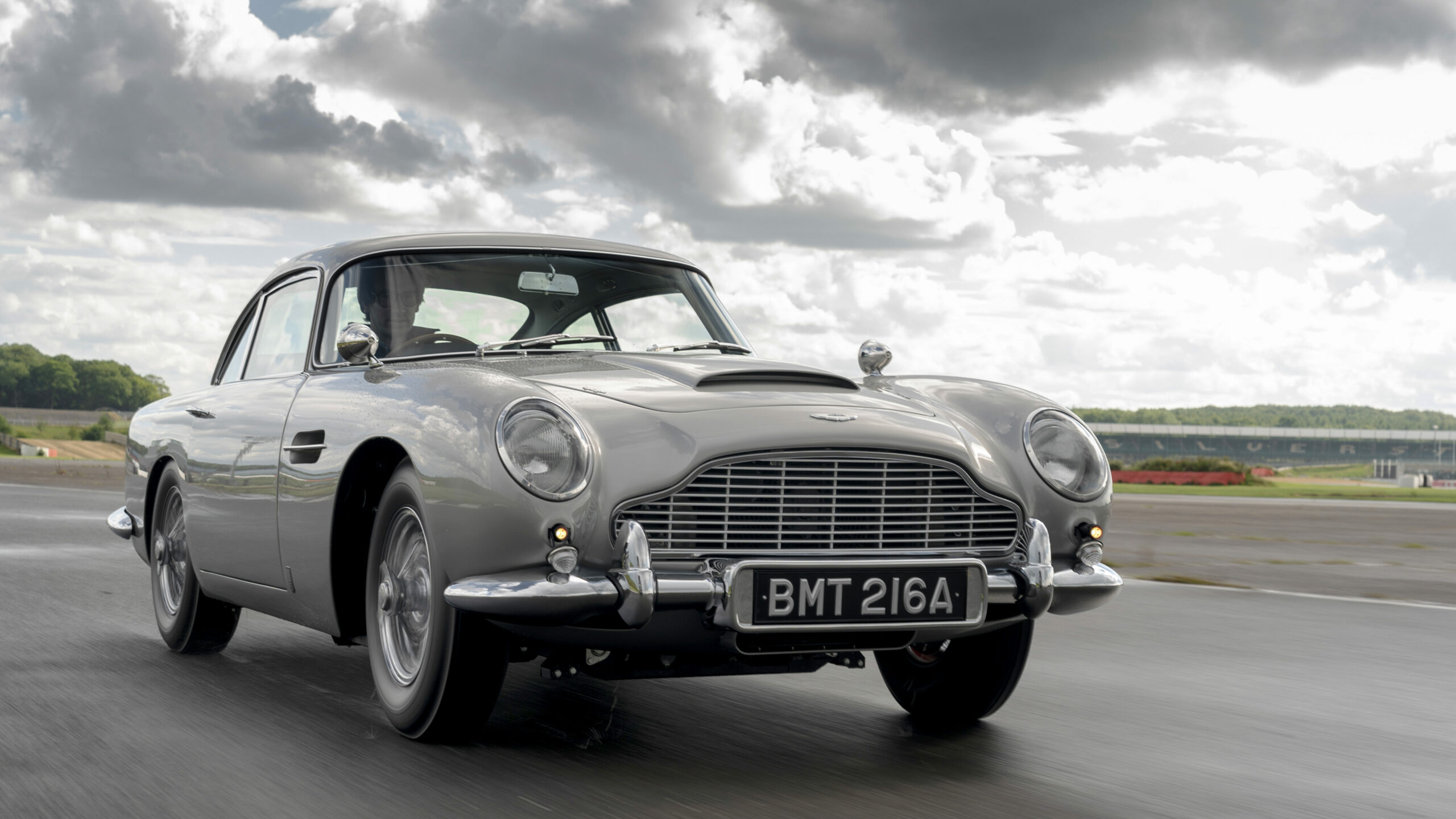
Based on James Bond’s legendary car from 1964, Aston Martin built 25 DB5 Goldfinger Continuation cars, all of them painted in Silver Birch and enhanced with functioning gadgets.
There is a case to be made that despite the impressive modern technology involved in the fabrication of continuation series, the experience of manufacture is not the same, not to mention that the formers were very much an experimental handmade project. Equally the experience of racing, even on the same circuit, is arguably different. The continuation version is a product of today which would have gone through all kinds of modern testing.
Now, does all of the above affect their desirability? Probably not. We all want to recreate magic moments, return to a happy childhood state – viewed with the rose-tinted glasses of hindsight. A continuation series represents a nostalgia trip down memory lane for those with the will and wealth to bring back the dead in the form of the prettiest ghosts money can buy.
Words: Dr Andrew Hildreth
Opening picture: Jaguar XKSS Continuation














Show Comments +